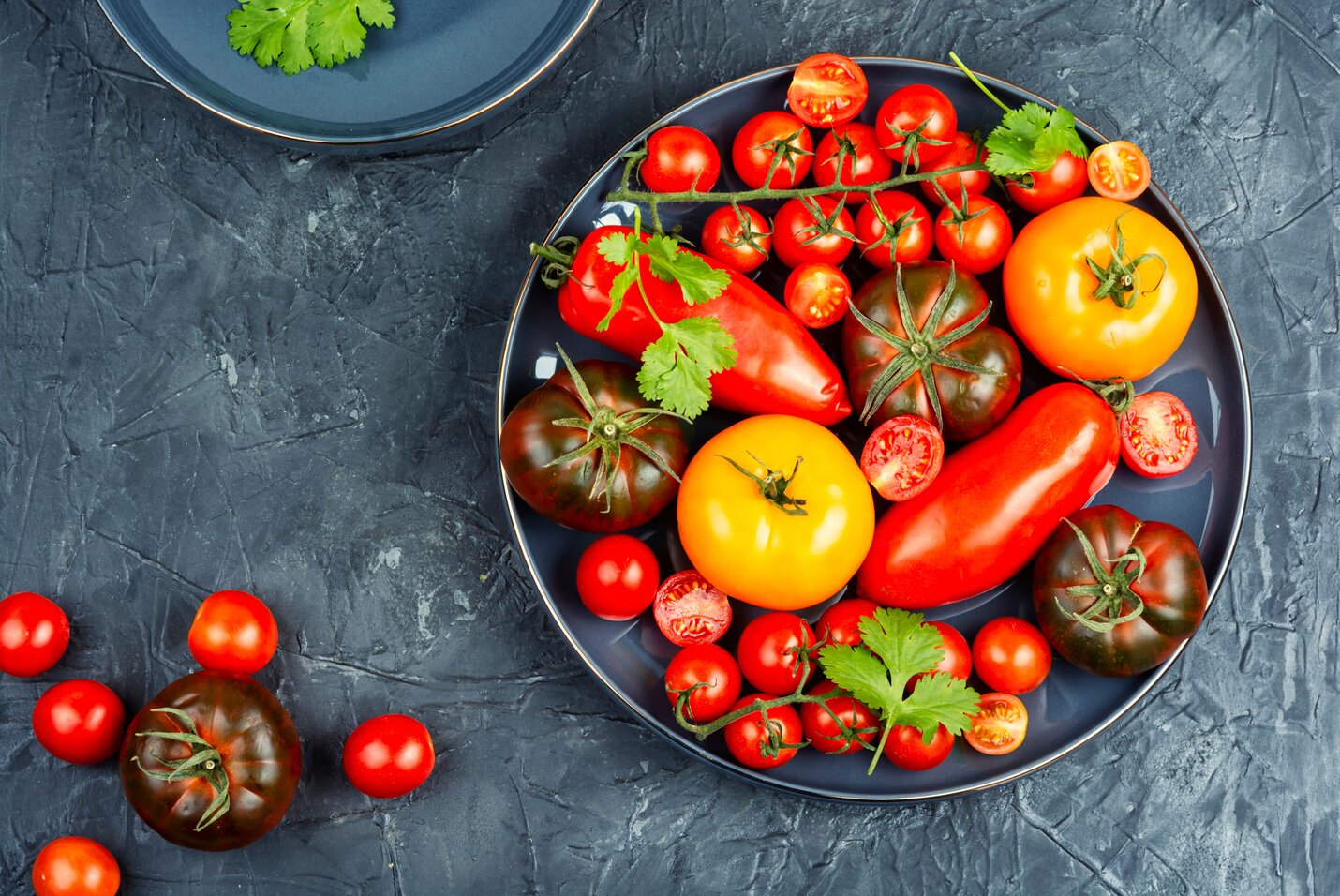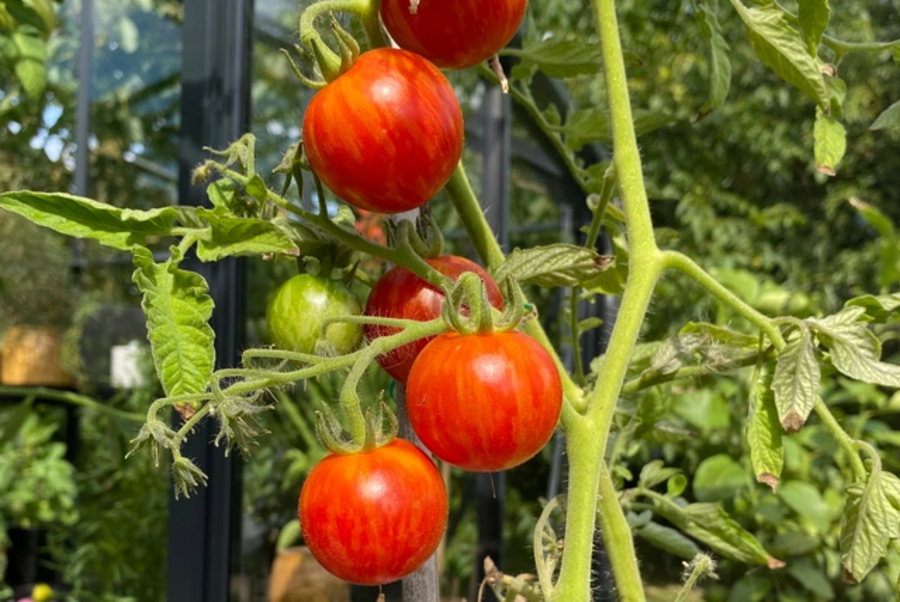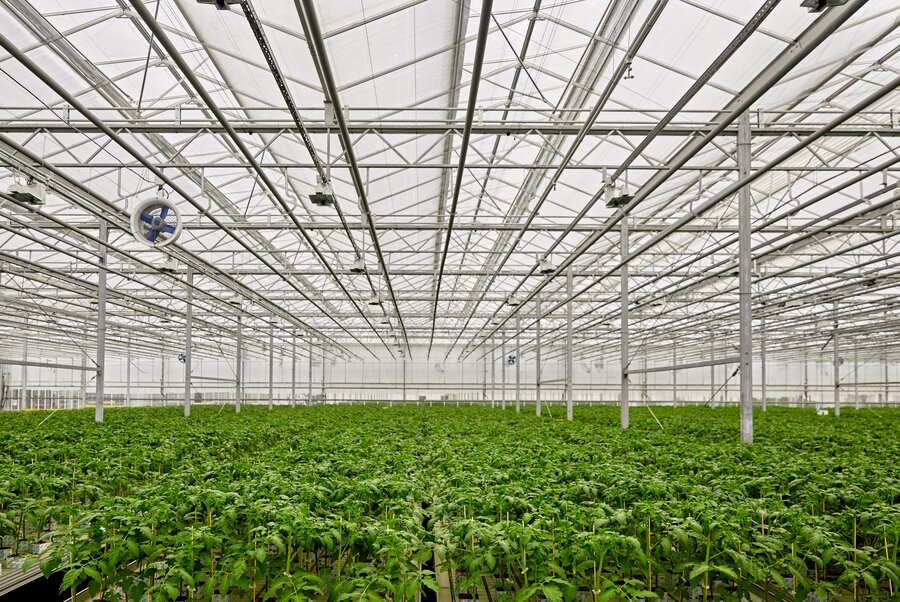Written by Spirekassen 29 Jun 2023 08:30
Diversity yields healthy tomatoes
In a short while, we can harvest the first tomatoes. Most people don't have just one variety of tomatoes in their greenhouse; they have several. We love trying different varieties. We often grow different types because they look different, taste different, and can be used in various ways in cooking. It's great that we're curious about diversity because diversity is the key to health in your greenhouse.
The Origin of Tomatoes
Tomatoes (Solanum lycopersicum) originated in the mountains of South America, Peru, and the Galapagos Islands. In the mid-16th century, tomatoes were introduced to Europe by explorers. At the same time, other plants we are familiar with today, such as corn, potatoes, and tobacco, were also introduced.
Significant Differences in Tomatoes
There is a big difference between the tomato varieties we grow in our hobby greenhouses and the varieties grown professionally in industrial greenhouses around the world.
In the professional horticulture industry, only a few varieties are used, bred specifically for certain purposes. Professional tomato growers primarily use F1 seeds. These F1 seeds are bred to have identical genetics. The plants and fruits are like twins, nearly identical copies of each other. Professional growers depend on consistent plant growth. In commercial greenhouses, they need to harvest a high number of kilograms per square meter, and the fruits need to have a specific size to fit into packaging.
F1 varieties are bred with specific traits, such as a robust skin. This way, the fruits are not damaged during handling, picking, and machine packing. The plants need to yield a high and consistent output. The tomato needs to withstand handling, sorting, and transportation to supermarkets. As a result, the flesh of the fruits is firm because the skin is thick. It's rare to find a commercial tomato that has it all. Even though the tomato looks beautiful, good taste is not the top priority. Good taste takes a back seat to other qualities, such as robustness in a packaging machine.
Tomato varieties for hobby greenhouses
In hobby greenhouses, the selection and experience are completely different. We see a variety of colours and shapes. Some varieties have a high yield, while others do not. It's completely natural. We get to enjoy the delightful beefsteak tomatoes, which often don't have a high yield. Here, we can experience fruits that are soft, delicate, and with a thin skin. In the industry, for the same reason, beefsteak tomatoes are rarely cultivated. The fruits would simply break during transportation to the customers. Almost everyone who grows tomatoes in a hobby greenhouse agrees on one thing: the tomato fruits taste heavenly, far from those bought in supermarkets.
How flavour is formed
The taste of a tomato fruit is composed of three elements: the content and ratio of various acids, sugars, and aromatic compounds. Acids and sugars are easy to analyse in terms of quantity and ratio. Therefore, they are used to describe the taste of a tomato objectively. Tomato varieties for private use generally have a soft and thin skin and quickly release all the flavours when eaten. Therefore, they provide a stronger flavour experience.
Diversity is plant health
Having many different tomato varieties in your hobby greenhouse is common sense. Biodiversity is indeed healthy. It prevents more than we realize. Different tomato varieties have different genetics, which means the tomatoes respond differently to diseases and pests. It's similar to how people can be affected differently by the same disease. In a hobby greenhouse, you often experience that only a few varieties are attacked by diseases/pests, and not all tomato plants are infected at once. The opposite is true for professional tomato growers. In industrial greenhouses, where often only a few varieties are cultivated, there is a large population of plants with the same genetics. This makes the plants vulnerable to disease attacks, which spread quickly since all the plants in the greenhouse have the same strengths and weaknesses. Therefore, diversity is the path to good health in the greenhouse.
Fun facts
The tomato varieties we know today are descendants of the original wild species. Over time, tomatoes have undergone a wild transformation through breeding. In fact, most tomato varieties are what we call chromosomal duplicates. Chromosomal duplication results in stronger plants with larger flowers and beautiful fruits. Tomatoes have 24 chromosomes, while some even have 26 chromosomes.






